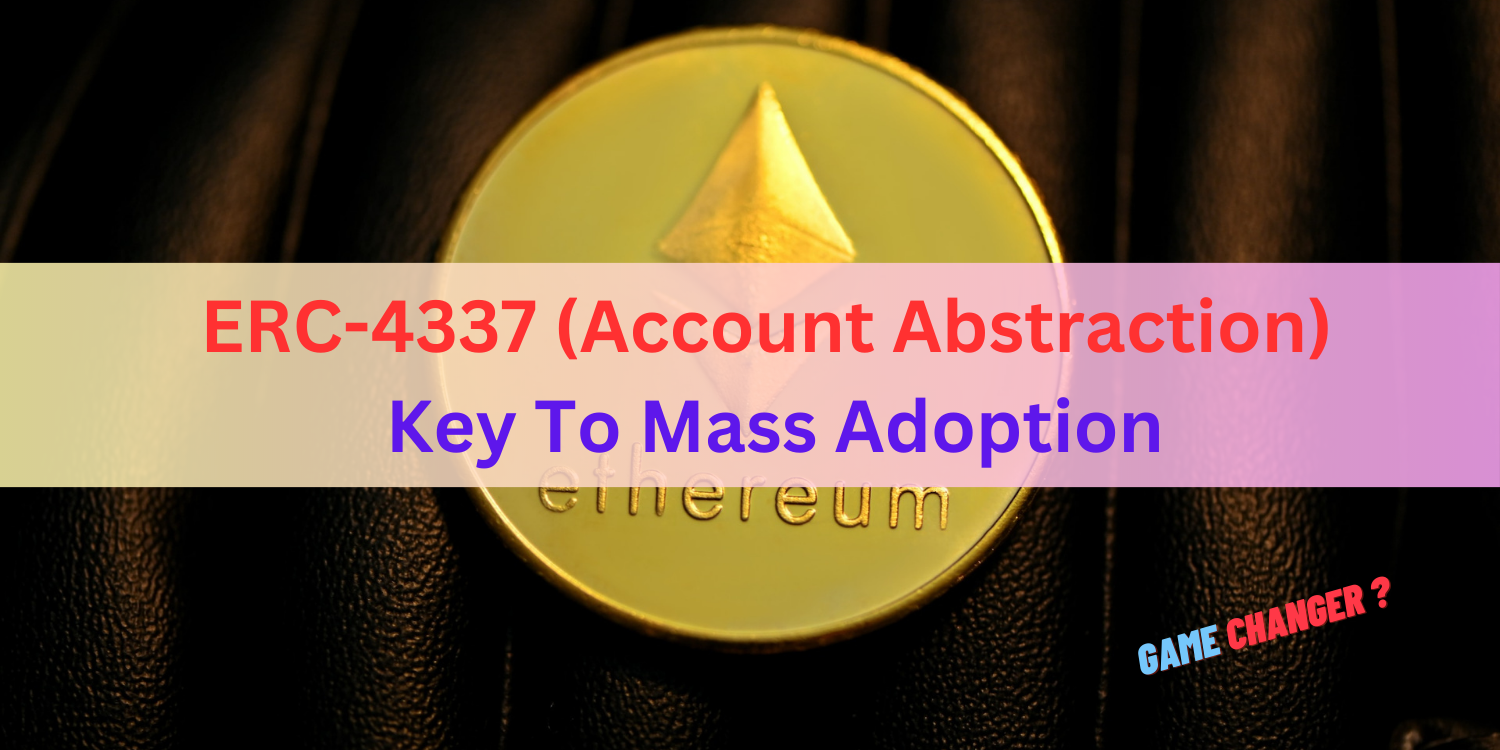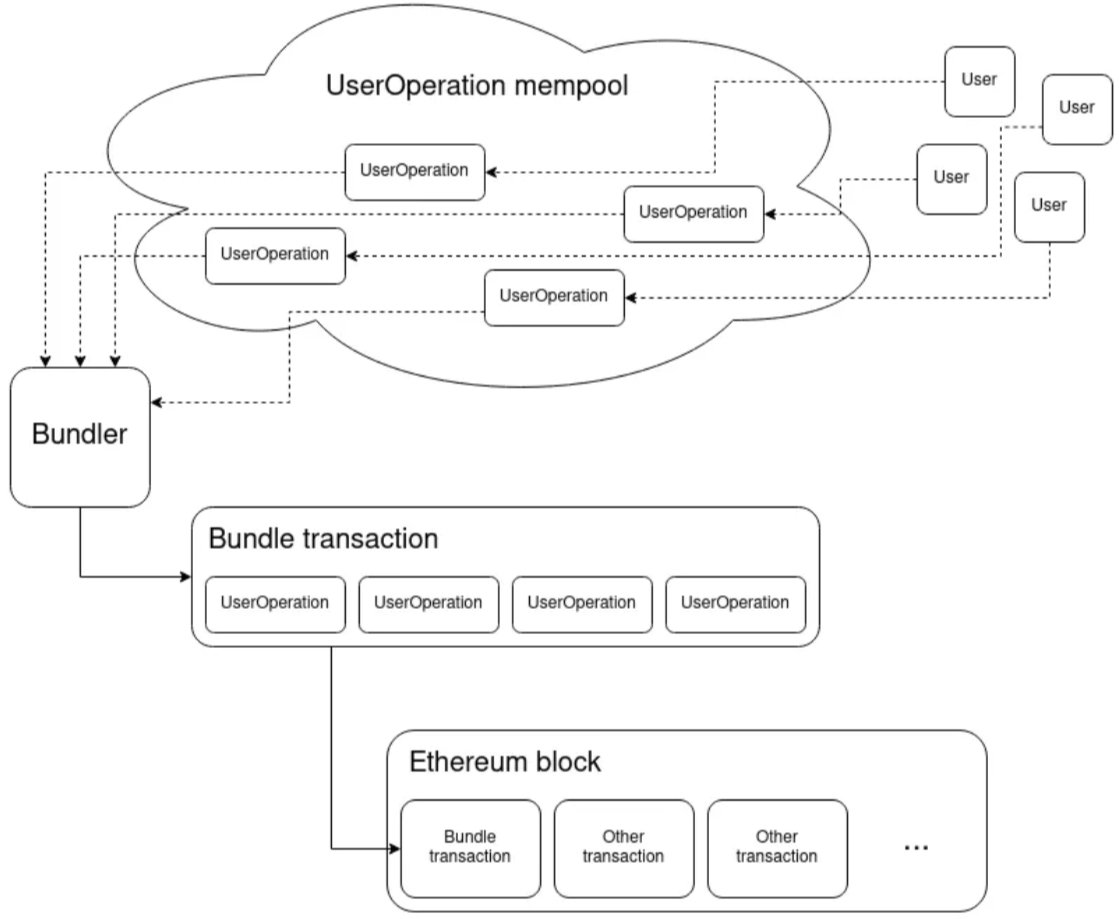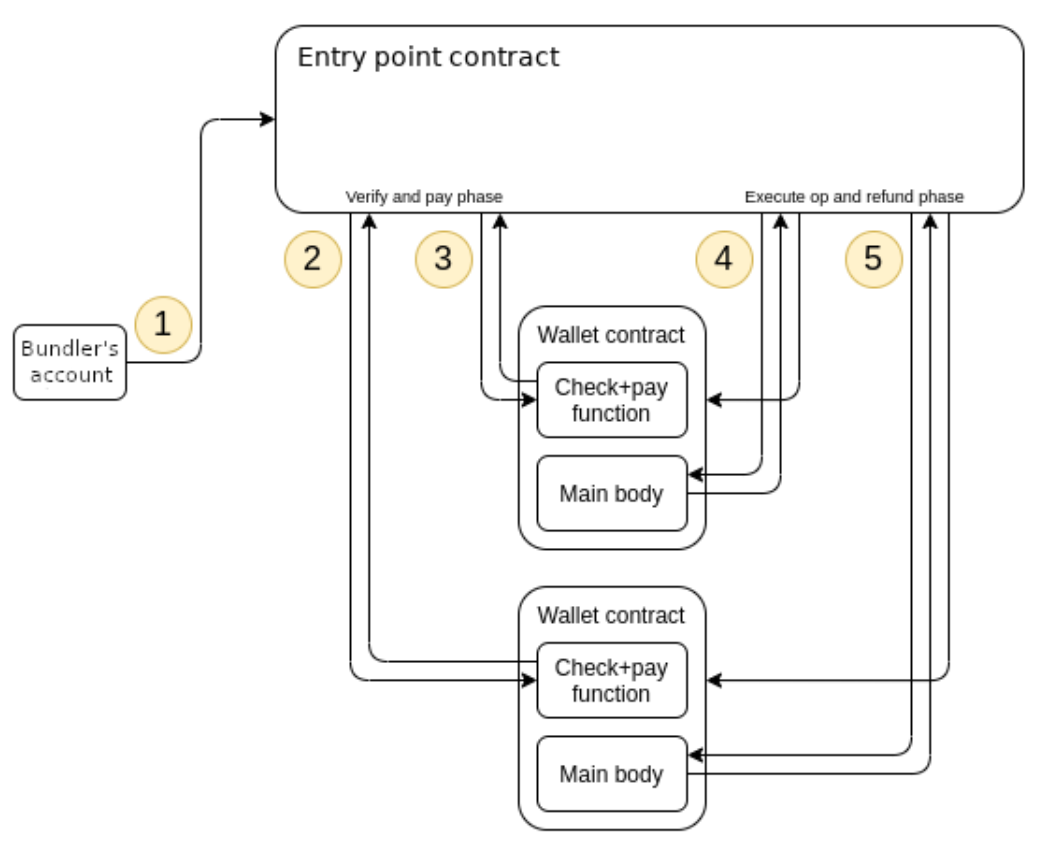ERC-4337 — Why Would This Change Ethereum To Mass Adoption?

Original photo by Kanchanara on Unsplash
Originally published in Coinmonks' Medium.
This article will unveil why the ERC-4337 (Account Abstraction) will be the key to the mass adoption of Ethereum. It is the rewritten (and improved) version of my previous article written in Thai.
Table of contents
At a glance
When it comes to the adoption of the blockchain, one of the biggest obstacles is the users’ private key management.
As we already know, managing a private key of the user’s wallet is very challenging. The possibility of the key being lost or thieved by hackers or malware is seen around. ☠️
Although using a hardware wallet could help protect the private key, the risk of incorrect usage or setting up the wallet incorrectly still remains.
Moreover, using the hardware wallet to sign a transaction is not easy and convenient at all (at least for 90+% of the citizens on the planet). 🤯
That might be the answer to the question, “Why aren’t we at warp? 🤑”. Nope, not that one…!
That might be the answer to the question, “Why doesn’t the blockchain change to mass adoption yet?”.
What is ERC-4337? (in short, probably)
ERC-4337 is a standard proposal (still in the draft) proposed by Vitalik et al.
This proposal presents an approach to abstracting an account to solve the adoption problem of Ethereum.
The key idea is to imagine that the user’s wallet can be a smart contract. The wallet must have a method for proving that a request for creating a transaction submitted to it must be sent from the legitimate wallet owner only. 🤔
With regard to the proving procedure in detail, we can view it as an abstraction layer. In other words, we can apply any solution for the proof, such as username and password, two-factor authentication, fingerprint scanning (or other biometrics options), OAuth 2.0, multisig, social recovery, or even the traditional private key. 💪
Several technical details still remain, but I will leave them for simplicity. Some details will be further explored below, though.

Figure 1. Overview of UserOperation lifecycle (Image courtesy of Vitalik Buterin)
Will the emergence of ERC-4337 lead to the centralized Ethereum?
One of the questions I have heard that many people misunderstand is that.
“ Transitioning from the private key to the fingerprint authentication or social recovery will render Ethereum to become a centralized blockchain??? ”
First of all, we must understand that the ERC-4337 is proposed without requiring any change to the core of Ethereum (Completely avoiding the consensus-layer protocol changes, instead relying on the higher-layer infrastructure).
Therefore, the traditional EOA (Externally-Owned Account) account system that manages the user’s wallet using the private key is still fully supported. 🥳
On the other hand, the arrival of the ERC-4337 proposal introduces new features that enable developers to invent new use cases endlessly.
Users may opt to store their assets using the private key-based wallet (traditional wallet) or to store their assets using the smart contract-based wallet (ERC-4337). 🤝
If you are concerning about the security, choose the traditional private key-based wallet. Problem solved!!
Hence, Ethereum would remain at the equivalent level of decentralization as it was. 🦾

Figure 2. Transaction control flow (Image courtesy of the ERC-4337 authors)
Other important features?
Besides the account abstraction, a core feature of the ERC-4337 proposal, there are several interesting features as follows (I will not explain them in depth). 🧞♂️
-
Pay transaction fees with ERC-20 tokens (Users can pay themselves, or even developers/platforms can sponsor the fees for their users)
-
Support atomic multi-operations (For speed and efficiency)
-
Support aggregated signatures, such as Schnorr and BLS algorithms, to enhance the processing of the transactions efficiently
-
Wallet (account) upgradeability
-
And many more
What use cases can we expect to see?
This section arose from my imagination totally 🤩. I believe that there will be real use cases beyond my imagination once the proposal is solid, depending on the creativity of the developers 🤤.
-
Software for managing wallets that connects users to the world of Ethereum seamlessly
Each wallet software will support several authentication schemes such as username and password, two-factor authentication, fingerprint scanning (or other biometrics options), OAuth 2.0, multisig, social recovery, etc.
Imagine that users can use their Facebook accounts to authenticate themselves to create transactions on Ethereum. 😘
Moreover, considering the case of the key loss, users can recover their keys using any arbitrary recovery mechanisms provided by each wallet software, such as challenge-response recovery, social recovery, etc. 🤠 -
DeFi/NFT/GameFi/Metaverse platforms support paying transaction fees for their users (gasless)
Requiring users to maintain an Ether balance in their wallets for funding transactions is another of the biggest obstacles to mass adoption. 🤯
With the ERC-4337, platforms can improve their users’ experience by sponsoring transaction fees as an incentive for using their platforms. 🥰 -
Users can pay their transaction fees with ERC-20 tokens of their choices
For instance, paying the fees with USDT, SUSHI, or other available ERC-20 tokens instead. 🤗
This will remove the cumbersome of maintaining an Ether balance as gas for funding users’ transactions. 😼 -
Enhanced DApps (Decentralized Applications) with the bundling of transactions
One improvement in this proposal is the bundling of transactions for speed and efficiency. This improvement enables multiple transactions to be packed and executed all at once.
To elaborate, let’s consider the case of a simple token swap. Without the ERC-4337, users must execute two separate transactions to approve their tokens’ spending and execute the token exchange.
With the ERC-4337, those two transactions can be bundled together and executed in one go, improving much better user experience. 🍻
Imagine the case of a one-click payment for shopping online on Web3 services. This will accelerate the development of the Web3 and DeFi ecosystem to mass adoption. 🚀 -
Privacy-preserving applications for protecting and enhancing users’ privacy
Since the ERC-4337 proposal supports arbitrary cryptographic schemes, we can expect to see new solutions to cope with the users’ privacy issues. 👍 -
Other potential use cases
The ERC-4337 will be the beginning of several innovations we haven’t ever seen before.
For example, the testament management system ✍️, ownership management system, etc.
Final thought
Imagine the GameFi platform allowing users to authenticate themselves using their Facebook or Google accounts.
Users can pay for their gas using any available ERC-20 token (or even the platform can sponsor the gas for their users).
Furthermore, users can purchase in-game NFT items seamlessly in one click, like shopping online.
For this reason, why wouldn’t the mass adoption of Ethereum happen? (overactive imagination?? 😎)
References
Originally published in Coinmonks' Medium.